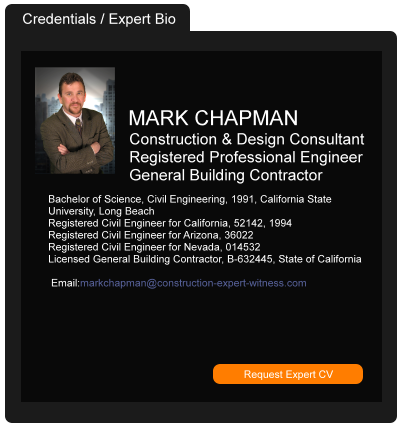ACEC Research Institute Releases New Engineering Industry Forecast
December 13, 2021 —
American Council of Engineering CompaniesWashington, DC, Dec. 09, 2021 (GLOBE NEWSWIRE) -- Today, the ACEC Research Institute released two new reports on the Engineering and Design Services industry: the 2021 Economic Assessment of the Engineering and Design Services Industry and a new Engineering Business Sentiment report for Q4 2021.
The data shows the industry has rebounded from project postponements due to COVID, though firms identify a tight labor market and lack of qualified workers as continued barriers to growth across public and private markets.
This is the second annual release of the Engineering and Design Services industry assessment, which tracks the industry's economic contributions, analyzes key economic drivers, and forecasts industry growth.
Snapshot of the Engineering and Design Services Industry:
1.5 million direct full- and part-time jobs
$97,300 average yearly wages
$338 billion in industry sales
$198 billion direct economic contribution
$105 billion collected in total federal, state & local tax
Both reports, the 2021 Economic Assessment of the Engineering and Design Services Industry and the Engineering Business Sentiment report for Q4 2021, are available for download by clicking
here.
###
The ACEC Research Institute is the research arm of the American Council of Engineering Companies – the business association of the nation's engineering industry. The ACEC Research Institute's mission is to deliver knowledge and business strategies that guide and elevate the engineering industry and to be the leading source of knowledge and thought leadership for creating a more sustainable, safe, secure and technically advanced built environment. For more information, go to www.acecresearchinstitute.org.
Read the court decisionRead the full story...Reprinted courtesy of
Blockbuster Breakwater: Alternative Construction Method Put to the Test in Tampa Bay
August 14, 2023 —
Scott Judy - Engineering News-RecordOn June 7, 2023, Tampa Bay news reporters trekked to the Sunshine Skyway bridge for a Florida Dept. of Transportation press conference that would explain the mystery behind the hundreds of curiously shaped concrete structures lining nearly the entire length of the span’s mile-plus-long south fishing pier access road.
Reprinted courtesy of
Scott Judy, Engineering News-Record
Mr. Judy may be contacted at judys@enr.com
Read the full story... Read the court decisionRead the full story...Reprinted courtesy of
All Risk Policy Only Covers Repair to Portion of Dock That Sustains Damage
January 06, 2012 —
Tred R. Eyerly - Insurance Law HawaiiA portion of a dock on Lack Michigan operated by the Ports of Indiana suffered visible damage. See Ports of Indiana v. Lexington Ins. Co., 2011 U.S. Dist. LEXIS 130979 (S.D. Ind. Nov. 14, 2011). Lexington Insurance Company insured the port. Lexington agreed that a portion of the dock was damaged and paid $1.2 million for repairs. A dispute arose, however, over whether additional sections of the dock were damaged and whether the damage was the result of more than one "occurrence."
An expert report opined that a significant drop creating record lows in the water level of Lake Michigan in 2007 caused damage to the dock. Lexington maintained that only 128 feet of the dock was damaged; other portions of the dock did not sustain "direct physical loss or damage."
Read the full story…
Reprinted courtesy of Tred R. Eyerly, Insurance Law Hawaii. Mr. Eyerly can be contacted at te@hawaiilawyer.com
Read the court decisionRead the full story...Reprinted courtesy of
Why Builders Should Reconsider Arbitration Clauses in Construction Contracts
October 21, 2019 —
David M. McLain – Colorado Construction LitigationMy advice to home builders has long been to arbitrate construction defect claims instead of litigating them in front of juries. Based on my experience and watching others litigate claims, I have learned that home builders usually fare better in arbitration than in jury trials, both in terms of what they have to pay the homeowners or HOAs and also in what they recover from subcontractors and design professionals. Because of these dynamics, conventional wisdom has been that builders should arbitrate construction defect claims. For several reasons, I am now questioning whether the time is right to consider a third option.
First, plaintiffs’ attorneys dislike arbitration and will continue their attempts to do away with arbitration for construction defect claims. In 2018, the Colorado Legislature considered HB 18-1261 and HB 18-1262. While both bills were ultimately killed, they showed the plaintiffs’ attorneys disdain for arbitration, and serve as a warning that attempts to prevent arbitration legislatively will continue. If the legislature does away with the ability to arbitrate construction defect claims, and that is the only means of dispute resolution contained in a builder’s contracts, that builder may find itself in front of a jury.
Read the court decisionRead the full story...Reprinted courtesy of
David McLain, Higgins, Hopkins, McLain & RoswellMr. McLain may be contacted at
mclain@hhmrlaw.com
The Problem With Building a New City From Scratch
May 10, 2022 —
Nolan Gray - BloombergFrom California to Miami and points in between, housing costs in the U.S. are skyrocketing, bringing bidding wars in hot markets and fears of a fresh surge in homelessness as renters scramble for an affordable place to live.
The deepening housing crunch — and the intractable resistance that residents often put up when the prospect of new housing emerges nearby — has led some observers to ask: Why don’t we just make new cities?
“When China needs new places for people to live, they just build a new city,” Nathan J. Robinson recently wrote in Current Affairs, contemplating all the undeveloped land in between California’s costly major urban areas. “They’ve built 600 of them since 1949.”
At first blush, it might seem obvious. But history is full of failed, unfinished or underperforming scratch-built city projects, in California and elsewhere, and more are in the pipeline.
To learn more about how we might best approach building new cities, CityLab talked to a person who’s had a hand in planning a few of them: Alain Bertaud, a fellow at the Marron Institute for Urban Management and a globetrotting former city planner at the World Bank. Our conversation has been edited for length and clarity.
Read the court decisionRead the full story...Reprinted courtesy of
Nolan Gray, Bloomberg
Toll Brothers Snags Home Builder of the Year Honors at HLS
May 13, 2014 —
Beverley BevenFlorez-CDJ STAFFBuilder magazine named Toll Brothers as their Builder of the Year during their Housing Leadership Summit in Laguna Niguel, California, according to Big Builder: “The Builder of the Year, BUILDER’s highest honor each year, is recognized for its excellence in successful business strategy, its achievements, and its corporate leadership.”
“The company’s up-market price-point, lifestyle segmentation positions, and its best-of-breed execution set it apart from competitors in production home building and development as one of housing’s most powerful and promising brands,” BUILDER editorial director John McManus said while presenting the award, as quoted by Big Builder. “Toll Brothers one day will be a globally recognizable luxury housing and hospitality trademark along the lines of Four Seasons or Ritz-Carlton.”
Read the court decisionRead the full story...Reprinted courtesy of
OIRA Best Practices for Administrative Enforcement and Adjudicative Actions
November 23, 2020 —
Anthony B. Cavender - Gravel2GavelOn March 2, 2020, the Environmental Protection Agency revised its “On-Site Civil Inspection Procedures” in accordance with Executive Order 13892 . (The rules are located at 40 CFR Part 31.) These rules set forth the components of an appropriate inspection procedure. Briefly, the rules require that, after the inspector’s credential are made available, the object of the inspection will be discussed (and most inspections will be held during regular working hours), consent to enter must be obtained, there should be an opening and a closing conference with facility representatives, safety protocols must be observed, confidential business information must be protected, and there will be an opportunity for split sampling. Once the report is completed, it will be shared with the facility.
A few months later, on August 31, 2020, the Office of Management and Budget’s Office of Information and Regulatory Affairs (OIRA) circulated a memo to the heads of all federal agencies to implement the principles of fairness in administrative enforcement and adjudication. This directive implements Executive Order 13924, and includes a comprehensive list of “best practices” that should be employed in their administrative enforcement and adjudicative actions. Briefly, these best practices (which are framed in broad terms) are:
1. The government has the burden of proving a violation of the rules or other authorities;
Read the court decisionRead the full story...Reprinted courtesy of
Anthony B. Cavender, PillsburyMr. Cavender may be contacted at
anthony.cavender@pillsburylaw.com
Top 10 Cases of 2019
February 10, 2020 —
Jeffrey J. Vita, Grace V. Hebbel & Andrew G. Heckler - Saxe Doernberger & Vita, P.C.In the 2019 edition of SDV’s Top Ten Insurance Cases, we probe wiretapping claims under an armed security services policy, delicately sniff out E&O coverage for a company using cow manure to create electricity, scour the earth for coverage for crumbling foundation claims, and inspect D&O policies for government investigation coverage. In addition, we preview some important and exciting decisions due in 2020. Without further ado, SDV raises the curtain on the most informative and influential insurance
coverage decisions of 2019.1
1.
ACE American Ins. Co. v. American Medical Plumbing, Inc.,
206 A.3d 437 (N.J. Super. Ct. App. Div. 2019)
April 4, 2019
Is waiver of subrogation language in a standard AIA201 contract sufficient to bar an insurer’s subrogation rights?
The New Jersey Supreme Court held that it was. Equinox Development obtained a comprehensive blanket all-risk policy with limits of $32 million per occurrence from ACE American Ins. Co. (“ACE”). The policy covered Equinox’s new project in Summit, New Jersey. Equinox hired Grace Construction as GC, who in turn subcontracted the plumbing scope of work to American Medical Plumbing, Inc. (“American”). After completion of the work under the subcontract, a water main failed and flooded the entire project. ACE paid the limits of the policy and subrogated against American to recover its losses. American argued that there was a waiver of subrogation in the AIA201 contract that barred the suit. ACE challenged the validity of the AIA provision, arguing that it applied only to claims before completion of construction and that it only applied to damage to the work itself and not to adjacent property. The court rejected both arguments, finding that the AIA provision effectively barred ACE’s subrogation claim. This decision provides guidance on a frequently used contract form for contractors across the country.
Reprinted courtesy of Saxe Doernberger & Vita, P.C. attorneys
Jeffrey J. Vita,
Grace V. Hebbel and
Andrew G. Heckler
Mr. Vita may be contacted at jjv@sdvlaw.com
Ms. Hebbel may be contacted at gvh@sdvlaw.com
Mr. Heckler may be contacted at agh@sdvlaw.com
Read the court decisionRead the full story...Reprinted courtesy of


































































